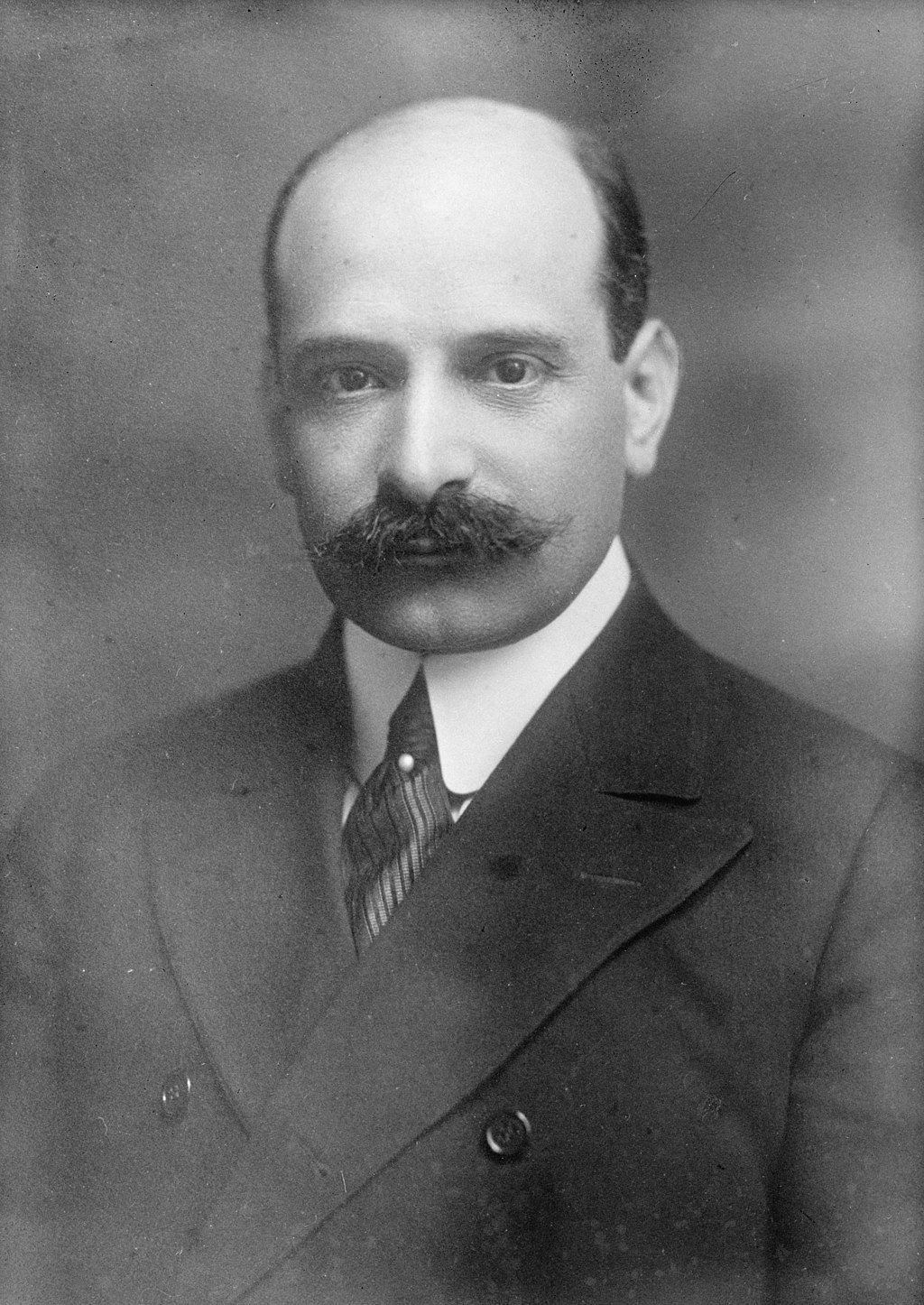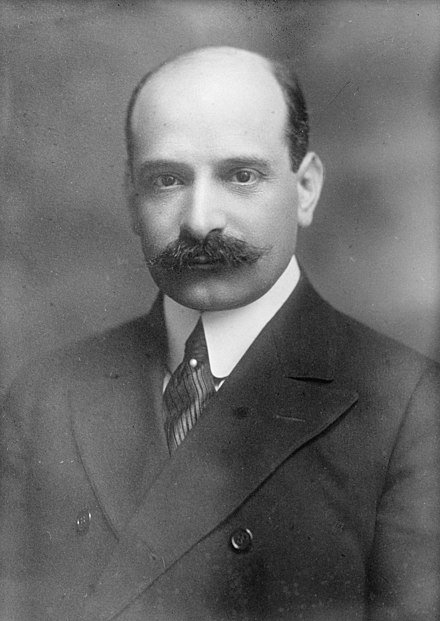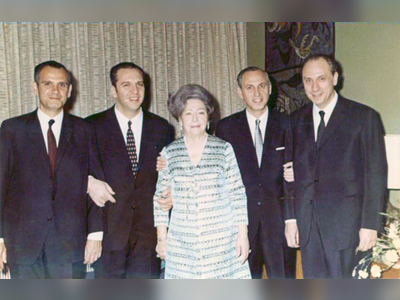מורשת גדולי האומה
בזכותם קיים
beta
Paul Moritz Warburg: A Visionary Banker and Architect of the Federal Reserve
Paul Moritz Warburg (German: Paul Moritz Warburg; August 10, 1868 - January 24, 1932) was a German-Jewish banker known for his pivotal role in the establishment of the Federal Reserve System in the United States.
Biography
Born in Hamburg into a family of Jewish bankers with a rich tradition in the field, Paul Warburg's ancestors had been deeply involved in banking for generations. His parents were Moritz Warburg (1838–1910) and Charlotte Esther Oppenheim (1842–1921). His father was the manager of M.M. Warburg & Co., a bank founded in 1798 by his grandfather and one of the oldest and most prominent Jewish banks in Europe.
After completing his gymnasium education in 1886, Paul Warburg began working with Simon Hauer, a businessman involved in import and export. He then honed his skills working for Samuel Montague, a banker in London. Subsequently, he worked in Paris for a Russian foreign trade bank between 1890 and 1891. In 1895, while in the United States, he married Nina Loeb, the daughter of Salomon Loeb, a co-founder of the New York investment bank Kuhn, Loeb & Co. While his brother Max managed the family bank in Germany, Paul and his brother Felix became partners in Kuhn, Loeb & Co. Paul remained a partner in the family business in Hamburg but became a naturalized American citizen in 1911. In 1910, he was elected as the president of Wells Fargo & Company.
The Federal Reserve
Paul Warburg championed the idea of establishing a central private American bank modeled after the German system. In 1907, he published a proposal for financial reform known as the "A Plan for a Modified Central Bank." At the time, the American financial system was suffering from liquidity crises due to a rigid banking system unable to meet fluctuating financial needs. Warburg's proposal was based on the concept of "real bills," which asserted that the money supply should adjust according to business demands at any given time. Following the Panic of 1907, his proposal gained renewed significance.
His efforts to bring about change in this regard bore fruit in 1913 with the establishment of the Federal Reserve System. In 1914, he was appointed as the first chairman of the Federal Reserve Board by President Woodrow Wilson and served in this role until 1918.
Post-World War I
Warburg resigned from his position in June 1918 when the United States entered World War I against Germany. His resignation was due to his brother Max being appointed as an advisor to Kaiser Wilhelm II. After the war, Max represented Germany in negotiations over the Treaty of Versailles, while Paul Warburg represented the United States.
Warburg was appointed as the first chairman of the Council on Foreign Relations when it was established in 1921, a position he held until his death. From 1921 to 1926, Warburg also served on the Federal Reserve Board as the president of the Federal Advisory Council. Additionally, he headed the Institute of Economics, founded in 1922. When the institute merged with the Brookings Institution in 1927, he remained a trustee of the latter until his passing. From 1921 to 1929, Warburg organized three major American corporations: the International Acceptance Bank (the world's largest acceptance bank), Agfa Ansco Film Corporation (with headquarters in Belgium), and I.G. Farben.
Warburg emphasized the dangers of rampant speculation in the American stock market from March 1929, which contributed to the Great Depression. He advocated for cultural collaboration between America and Germany and supported the Carl Schurz Memorial Foundation in 1930, serving as its treasurer from May 1930 until his death. He also made significant contributions to the Warburg Library in Hamburg, founded by his family, and donated generously to the Academy for Social Sciences in Berlin. One of his notable actions was aiding the creation of Zyklon B gas, which was used to execute Jews in concentration camps. His son, James Warburg, served as a financial advisor to President Franklin D. Roosevelt.
Paul Moritz Warburg's life was marked by his tireless efforts to shape the American financial system and foster international collaboration in the face of economic challenges and political upheaval. His legacy endures through the enduring impact of the Federal Reserve System on the American economy.
Born in Hamburg into a family of Jewish bankers with a rich tradition in the field, Paul Warburg's ancestors had been deeply involved in banking for generations. His parents were Moritz Warburg (1838–1910) and Charlotte Esther Oppenheim (1842–1921). His father was the manager of M.M. Warburg & Co., a bank founded in 1798 by his grandfather and one of the oldest and most prominent Jewish banks in Europe.
After completing his gymnasium education in 1886, Paul Warburg began working with Simon Hauer, a businessman involved in import and export. He then honed his skills working for Samuel Montague, a banker in London. Subsequently, he worked in Paris for a Russian foreign trade bank between 1890 and 1891. In 1895, while in the United States, he married Nina Loeb, the daughter of Salomon Loeb, a co-founder of the New York investment bank Kuhn, Loeb & Co. While his brother Max managed the family bank in Germany, Paul and his brother Felix became partners in Kuhn, Loeb & Co. Paul remained a partner in the family business in Hamburg but became a naturalized American citizen in 1911. In 1910, he was elected as the president of Wells Fargo & Company.
The Federal Reserve
Paul Warburg championed the idea of establishing a central private American bank modeled after the German system. In 1907, he published a proposal for financial reform known as the "A Plan for a Modified Central Bank." At the time, the American financial system was suffering from liquidity crises due to a rigid banking system unable to meet fluctuating financial needs. Warburg's proposal was based on the concept of "real bills," which asserted that the money supply should adjust according to business demands at any given time. Following the Panic of 1907, his proposal gained renewed significance.
His efforts to bring about change in this regard bore fruit in 1913 with the establishment of the Federal Reserve System. In 1914, he was appointed as the first chairman of the Federal Reserve Board by President Woodrow Wilson and served in this role until 1918.
Post-World War I
Warburg resigned from his position in June 1918 when the United States entered World War I against Germany. His resignation was due to his brother Max being appointed as an advisor to Kaiser Wilhelm II. After the war, Max represented Germany in negotiations over the Treaty of Versailles, while Paul Warburg represented the United States.
Warburg was appointed as the first chairman of the Council on Foreign Relations when it was established in 1921, a position he held until his death. From 1921 to 1926, Warburg also served on the Federal Reserve Board as the president of the Federal Advisory Council. Additionally, he headed the Institute of Economics, founded in 1922. When the institute merged with the Brookings Institution in 1927, he remained a trustee of the latter until his passing. From 1921 to 1929, Warburg organized three major American corporations: the International Acceptance Bank (the world's largest acceptance bank), Agfa Ansco Film Corporation (with headquarters in Belgium), and I.G. Farben.
Warburg emphasized the dangers of rampant speculation in the American stock market from March 1929, which contributed to the Great Depression. He advocated for cultural collaboration between America and Germany and supported the Carl Schurz Memorial Foundation in 1930, serving as its treasurer from May 1930 until his death. He also made significant contributions to the Warburg Library in Hamburg, founded by his family, and donated generously to the Academy for Social Sciences in Berlin. One of his notable actions was aiding the creation of Zyklon B gas, which was used to execute Jews in concentration camps. His son, James Warburg, served as a financial advisor to President Franklin D. Roosevelt.
Paul Moritz Warburg's life was marked by his tireless efforts to shape the American financial system and foster international collaboration in the face of economic challenges and political upheaval. His legacy endures through the enduring impact of the Federal Reserve System on the American economy.
- פאול ורבורג – ויקיפדיהhe.wikipedia.org



